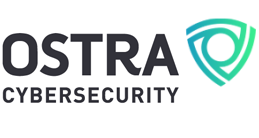Focused Ransomware Attacks
Costs Rise for Vulnerable Businesses
Ostra can prevent cyber-criminals from cashing in on SMB targets.
Ransom demands nearly doubled in 2019 and recovery time from a ransomware incident also rose sharply. This record-setting trend is something SMB’s need to pay particular attention to. The dramatic increase in ransomware costs stem from the new powerful strains of sophisticated ransomware. High-resource businesses targeted by Ryuk in early 2019 are beginning to resist egregious ransom demands, so criminals will be looking for other businesses to attack. SMBs with less sophisticated security solutions are the perfect target.
 The average ransom demand paid during the first quarter of this year was up 89% from $12,762 compared to $6,733 at the end of last year. However, that is just a fraction of the actual cost of an attack. New variants of ransomware effectively disable or destroy backups, and use encryption methods that make it extremely difficult to decrypt. This resulted in increased downtime after an attack by 47% over late 2018, translating to an average recovery cost of $64,645. Rising ransom demands that were absorbed by mid-market and large enterprises could cripple SMB targets.
The average ransom demand paid during the first quarter of this year was up 89% from $12,762 compared to $6,733 at the end of last year. However, that is just a fraction of the actual cost of an attack. New variants of ransomware effectively disable or destroy backups, and use encryption methods that make it extremely difficult to decrypt. This resulted in increased downtime after an attack by 47% over late 2018, translating to an average recovery cost of $64,645. Rising ransom demands that were absorbed by mid-market and large enterprises could cripple SMB targets.
Smaller operations with limited resources and staff are focused on their craft, and rely on security products that criminals know how to circumvent. Investing in IT security and backup policies can also be difficult for SMBs. Criminals know that many SMBs have a low tolerance for data loss and downtime, which makes them vulnerable ransomware targets.
Ostra’s Enterprise Grade Security Solution was designed to solve this problem. Our multi-tenant platform gives SMB’s access to layers of security solutions used to protect large corporations. Contact Ostra to learn how to protect your data and your business.
As Your Trusted Cybersecurity Team, Ostra makes cybersecurity simple and accessible to businesses of all sizes. Ostra provides its partners and their clients with a multi-layered, comprehensive and fully managed Security as a Service.






